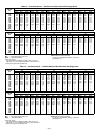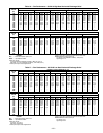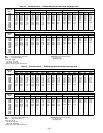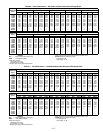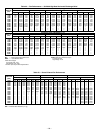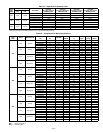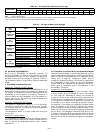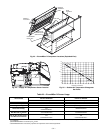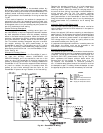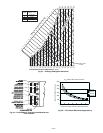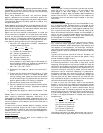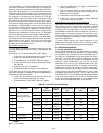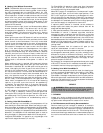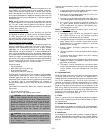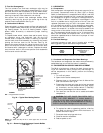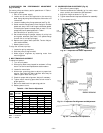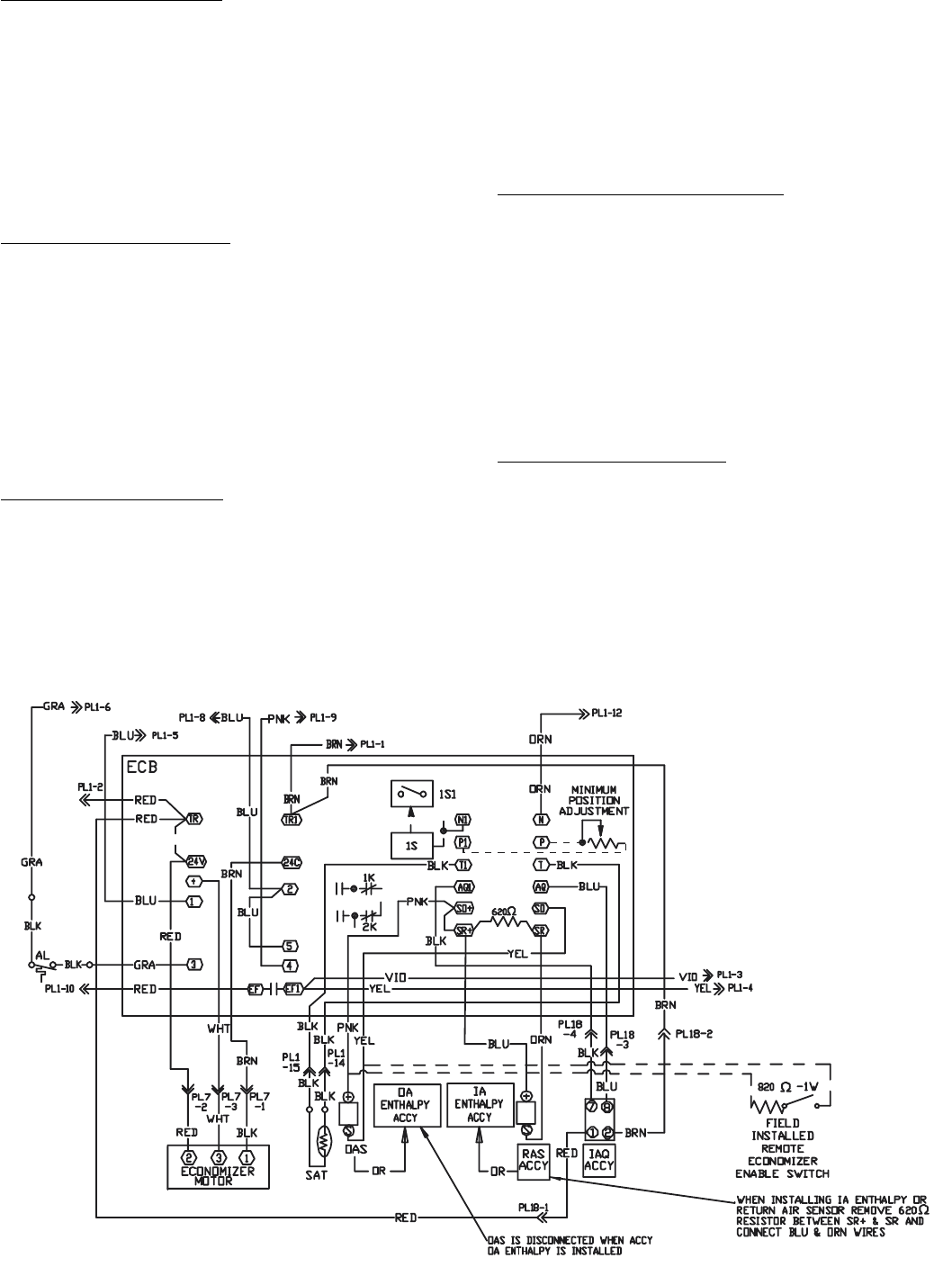
—32—
Differential Dry Bulb Control
For differential dry bulb control the standard outdoor dry
bulb sensor is used in conjunction with an additional acces-
sory dry bulb sensor (part number CRTEMPSN002A00). The
accessory sensor must be mounted in the return airstream.
Wiring is provided in the EconoMi$er IV wiring harness. See
Fig. 26.
In this mode of operation, the outdoor-air temperature is
compared to the return-air temperature and the lower tem-
perature airstream is used for cooling. When using this mode
of changeover control, turn the enthalpy set point potentiom-
eter fully clockwise to the D setting.
Outdoor Enthalpy Changeover
For enthalpy control, accessory enthalpy sensor (part num-
ber HH57AC078) is required. Replace the standard outdoor
dry bulb temperature sensor with the accessory enthalpy
sensor in the same mounting location. When the outdoor air
enthalpy rises above the outdoor enthalpy changeover set
point, the outdoor-air damper moves to its minimum posi-
tion. The outdoor enthalpy changeover set point is set with
the outdoor enthalpy set point potentiometer on the
EconoMi$er IV controller. The set points are A, B, C, and D.
See Fig. 27. The factory-installed 620-ohm jumper must be in
place across terminals S
R
and + on the EconoMi$er IV con-
troller. See Fig. 26.
Differential Enthalpy Control
For differential enthalpy control, the EconoMi$er IV control-
ler uses two enthalpy sensors (HH57AC078 and
CRENTDIF004A00), one in the outside air and one in the
return air duct. The EconoMi$er IV controller compares the
outdoor air enthalpy to the return air enthalpy to determine
EconoMi$er IV use. The controller selects the lower enthalpy
air (return or outdoor) for cooling. For example, when the
outdoor air has a lower enthalpy than the return air, the
EconoMi$er IV opens to bring in outdoor air for free cooling.
Replace the standard outside air dry bulb temperature
sensor with the accessory enthalpy sensor in the same
mounting location. Mount the return-air enthalpy sensor in
the return-air duct. Wiring is provided in the EconoMi$er IV
wiring harness. See Fig. 26. The outdoor enthalpy
changeover set point is set with the outdoor enthalpy set
point potentiometer on the EconoMi$er IV controller. When
using this mode of changeover control, turn the enthalpy set
point potentiometer fully clockwise to the D setting. See
Fig. 28.
Indoor Air Quality (IAQ) Sensor Input
The IAQ input can be used for demand control ventilation
control based on the level of CO
2
measured in the space or
return-air duct.
Mount the optional IAQ sensor according to manufacturer
specifications. The IAQ sensor should be wired to the AQ and
AQ1 terminals of the controller. Adjust the DCV (demand
controlled ventilation) potentiometers to correspond to the
DCV voltage output of the indoor air quality sensor at the
user-determined set point. See Fig. 29.
If a separate field-supplied transformer is used to power the
IAQ sensor, the sensor must not be grounded or the
EconoMi$er IV control board will be damaged.
Exhaust Set Point Adjustment
The exhaust set point will determine when the exhaust fan
runs based on damper position (if accessory power exhaust is
installed). The set point is modified with the Exhaust Fan
Set Point (EXH SET) potentiometer. See Fig. 28. The set
point represents the damper position above which the
exhaust fans will be turned on. When there is a call
for exhaust, the EconoMi$er IV controller provides a
45 ± 15 second delay before exhaust fan activation to allow
the dampers to open. This delay allows the damper to reach
the appropriate position to avoid unnecessary fan overload.
Fig. 26 — EconoMi$er IV Wiring
LEGEND
IA — Indoor Air
IAQ — Indoor Air Quality
OA — Outdoor Air
OAS— Outdoor-Air Temperature Sensor
PL — Plug
RAS— Return-Air Temperature Sensor
SAT — Supply-Air Temperature Sensor



